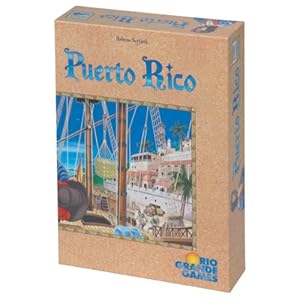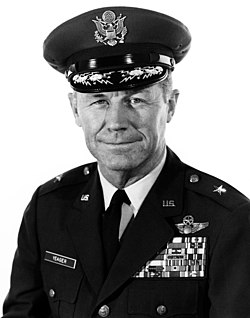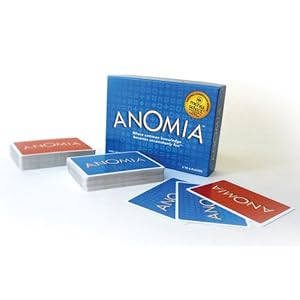Be sure to read
Part 1 if you haven't already! I'll pick up from yesterday's post and describe the second half of the puzzlehunt.
Puzzle 4: "Power Word Chores"
Like I mentioned, when we first started the hunt, we didn't quite understand how the meta puzzle worked or how the smaller puzzles fit together. When we deciphered "ill," we weren't sure if maybe it was a clue to the location to the next puzzle. "Where would you go if you were ill?" "The medicine cabinet?" There wasn't anything in the medicine cabinet except a box of Benadryl and a handful of bandages, so we started turning the place upside down. Nothing in the shower curtain, ditto for the linen closet. "Maybe if you're really ill, you go to the toilet?" And to our vast surprise, there was a puzzle taped to the bottom of the tank's lid.
We felt less bad about "brute-forcing" this one, because only a few minutes after we found the puzzle, we found the clue that should have led us there. Written on a chalkboard in the hallway was "Tanked? Use the toilet down the hall."
It was pretty obvious from the puzzle's wording that it had something to do with Dungeons and Dragons, and having spent basically every weekend of my undergrad career playing D&D, I quickly took the lead on this one. There was a list of "chores" that some wizard had assigned to us in pairs, and most of the chore names were distinctive enough that I recognized them immediately as wizard spells from the old version 3.5 of D&D. I pulled some D&D rulebooks off the shelf and wrote down pertinent information--page number, spell "level,"
school of magic--for each one.
After staring at that information for a while, I got a minor hint from Lauren, who assured me that the spell levels were important, and that there was a code involved, but a really easy one. I finally saw it after a bit of trial and error: all it took was adding the spell level of each pair, which conveniently gave five numbers between 1 and 26. I converted each number to a letter, which spelled out "gnome," the solution to the puzzle.
Having such extensive D&D experience definitely helped in this puzzle because I knew where to look in the rulebooks and what information might be pertinent. Given the circle of people who might be puzzlehunting, someone knowing a lot about D&D was a pretty fair assumption anyway. Of course, it would have been possible to complete the puzzle without any D&D experience at all, but it would have been a bit tougher or at least time-consuming.
Puzzle 5: "Sticky Situation"
Although we got a head start on this one by misinterpreting the "It starts you up" clue, we figured out the real clue too. One of the clues we got to start was a few words written in a weird loopy language that looked somewhere between Hebrew and
Georgian. It turned out, naturally, to be Elvish, specifically
Quenya (though there was some thought at first that maybe we were dealing with
Sindarin.) We grabbed Joe and Lauren's three copies of
The Lord of the Rings and got to translating. Quenya to English wasn't trivial, particularly because the vowels in the Elvish languages are a little ambiguous, and constructing a double vowel is nearly impossible. But we got the message quickly enough: "drink more tea."
The clue in the tea cabinet contained six pieces of origami paper with numbers and words written on them, directions for how to make origami rabbits, and the instruction "contacting the primal rabbit is difficult." Making the rabbits wasn't too difficult, and we knew modular origami when we saw it, but the tricky part was figuring out how to fit (or "stick," going off the puzzle's theme) everything together. We got the hint that the number six should inform what shape we were supposed to make, which we interpreted as a cube. Also, there were numbers on some of the modules, and the hint "primal rabbit" pointed us in the direction of matching up the modules such that when two numbers overlapped, they added up to a prime number.
We became convinced that there were multiple configurations that would have satisfied that condition, but Lauren assured us there was one unique solution, and we eventually found it after a few iterations. The last part of the puzzle was to examine the words at each vertex (except for one blank vertex) of the cube, identify a letter in common among all the words at the vertex, and finally unscramble those letters to form one last word: "paste," another clever call-back to the puzzle's name. It took a few hints, but this one was satisfying because we worked all the way from the first clue to the solution without accidentally skipping a step or needing a major hint.
Puzzle 6: "The Story So Far"
Our third clue that we got at the very beginning of the hunt was a blank sheet of paper. There was clearly
something written on it, but the invisible ink was invisible enough that we couldn't tell exactly what it said. We knew that the most basic invisible inks are written with acid, often lemon juice, and developed under heat. So we found and lit a candle, held our note over it, and watched the message "what wrote me?" appear. Easy: lemon juice! We found a lemon, put it on the table... and stared at it intermittently over the next hour.
Eventually, we got a pity clue from Joe and Lauren's roommate: "real lemons are for chumps." We went back to the kitchen and got a bottle of lemon
juice from the fridge, which had the next puzzle rolled up inside it. The puzzle was a series of vignettes featuring characters and monsters from the board game Arkham Horror, a favorite of Joe and Lauren's. Each story contained one character, one monster, and one attribute, which we were supposed to match up on the board game's character sheets and find a hidden message. Unfortunately, there were a couple of typos in the puzzle that rendered it basically unsolvable.
It was still a really nice idea for a puzzle, and it was balanced well between clever references to the game (which would have been even more entertaining for people familiar with the game) and mechanics that would have been possible to solve even for people who had never seen the game before. Much like the D&D puzzle, knowledge of Arkham Horror would have helped but wouldn't have been necessary. But as soon as Lauren figured out that we probably couldn't solve the puzzle as written, she advised us to work on the meta-puzzle, which we already had enough information to solve.
Meta-puzzle: The Elder Sign
Once we realized that we no longer needed the "tank" clue from the chalkboard, we erased it and wrote our answers to the individual puzzles: "he," "moon," and so on. We stared at it for a few minutes and eventually figured out that we were supposed to combine the nth letter from the nth puzzle answer to form a word: the "h" from "he," the "o" from "moon," and so on. It spelled "HOLME_," and given that we were solving clues, it wasn't much of a logical leap to assume that the 6th letter from the 6th puzzle answer was an "s".

Telling the password "Holmes" to Lauren and Joe, we got the final clue: four number-cardinal direction pairs and instruction to begin at the top of the stairs. From here, it was basically a formality to finish out the puzzle. We started at the top of the outside stairs, walked the given number of paces in each direction around the house, and ended up in a corner of the porch. Under the porch at that spot was the Elder Sign, the seal we needed to banish Cthulhu for good.
My only criticism of this part of the hunt was that giving the password to Lauren and Joe in exchange for the last clue felt a little artificial in a game that otherwise had an excellent sense of verisimilitude. Perhaps we could have been given a cipher that matched up each letter of the alphabet with a direction-number pair, and only by mapping "Holmes" to the cipher would we have had any idea which of those direction-number pairs we actually needed. But it's only a minor complaint, and it didn't make the end of the game any less exciting.
Overall Impressions
Wow, this was fun. The best part of the game (and of well-designed puzzlehunts in general) was that any problem-solving skill you could think of was relevant and useful. Terrible at mathematical ciphers (like I am)? No problem, just work on the lateral thinking puzzle. Concrete spatial puzzles more your thing than abstract linguistic ones? There's call for that too. It wasn't even necessary for every member of the team to have a puzzle-solving "specialty". It's always rewarding to have one of your suggestions end up contributing to a puzzle's solution, regardless of whether it was a reasoned attempt to understand the puzzle's mechanics or simply an off-the-wall hypothetical.
In addition to everyone being able to contribute, the team-based aspect of the puzzlehunt helped everyone work together and get to know each other. I'm notoriously wary of the "here's a bunch of people who already know each other; go make friends with them" social setting, but given that we were all trying to help each other accomplish the same thing, it felt much more collaborative than awkward. Lauren liked the team collaboration for a different reason. Some of the larger puzzlehunts she'd been to (
MIT's Mystery Hunt particular) had some hyper-competitive teams that cared far more about winning than about solving the puzzles.
For instance, instead of working through the Caesar cipher, one of these hyper-competitive teams might estimate the length of time it would take to try every combination to the padlock. If it would take less time to try every combination than it would to solve an average puzzle, they would assign one guy to brute-force the lock while everyone else moved their brainpower to a different puzzle. That might be the optimal method if you're actively trying to "win," but it goes against the spirit of the hunt just a little. For the smaller, cozier environment we were puzzling in, solving the puzzles was an end in itself, and that was much more rewarding for both us and the puzzles' creators.
Lauren's criticism of her own puzzlehunt was that she felt a little segregated from us--it was a fun excuse to have a bunch of friends over, but at the same time she couldn't really hang out with us. We brainstormed a few ways to fix that issue, including an interview or "interrogation" puzzle, a "prisoner rescue" scenario, or a game of cards or dice or chess where a clue was embedded in the game pieces.
Since my first puzzlehunt was so enjoyable, I'll definitely try to do more in the future, including the
Berkeley one next year. I'd highly recommend participating yourself if this sounds like your scene, and let me know if you're interested in puzzlehunting in the Berkeley area.


















